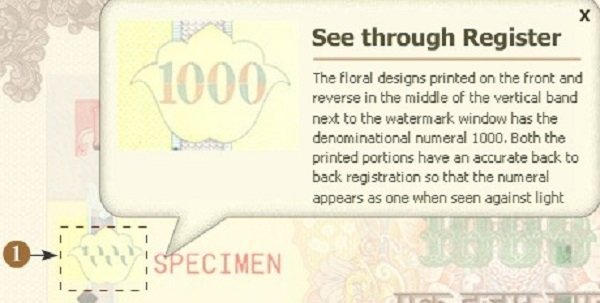You may find it hard to believe but fake currency notes are everywhere, and we might not realize it if someone is trying to fool us. A report released by the Reserve bank of India in 2015 suggested that the circulation of counterfeit notes rose 22%, with around 6 lakh fake notes present in the market. As surprising as it may seem, it actually is the truth. No wonder the petrol pump guy and the shopkeeper are extra careful when we hand over a ₹500 or a ₹1000 note!
With India being the largest producer and consumer of currency notes in the world, second only to China, we don’t seem to make a complete shift to electronic transactions anytime soon. So, to separate the genuine notes from fake ones, RBI has introduced some security features, which we all should be aware of.
Here are 9 ways you can ensure that the rupee note is not fake.
1. Watermark
We know that Indian currency notes have Mahatma Gandhi’s picture on them, but there’s also a watermark on it, on the other end of the note, in the blank space. You can see it if you hold the note against the light.
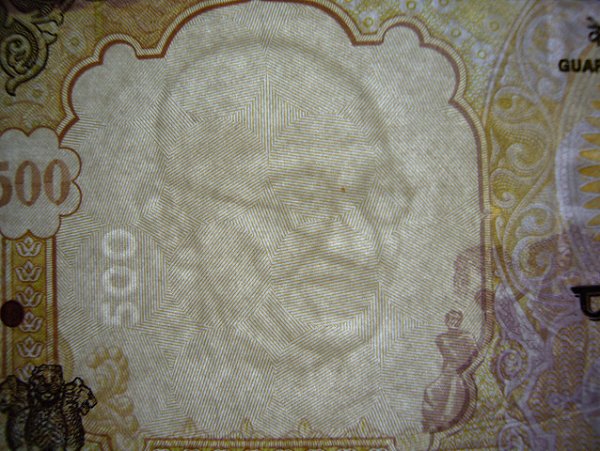
2. The security thread
Every Indian currency note has a security thread, which is a vertical line a little to the left of Mahatma Gandhi’s photo. If it’s a ₹1000 note, the security thread reads 1000, RBI, and Bharat, (in Hindi), written continuously in one line. This feature too, can be seen by holding the note against the light.

3. Latent Image
A latent image, showing the numerical value of the currency, lies on a vertical band on the right side of Mahatma Gandhi’s picture. If you look carefully, you can actually see half the design with naked eyes, which completes when the note is held against the light. This feature is present on the obverse side of ₹1000, ₹500, ₹100, ₹50 and ₹20 notes.
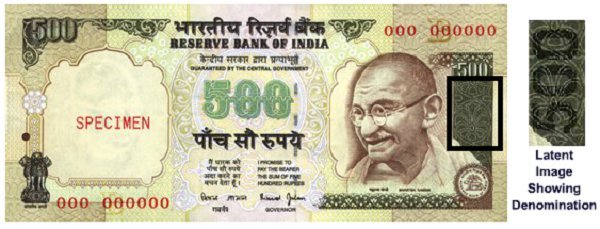
4. Micro-lettering
You’ll need a magnifying glass to see this feature. It’s there between the vertical band and Mahatma Gandhi portrait. In ₹5 and ₹10 notes, it mentions the word RBI. The notes of ₹20 and above have RBI and the denominational value of the notes written in micro-letters.
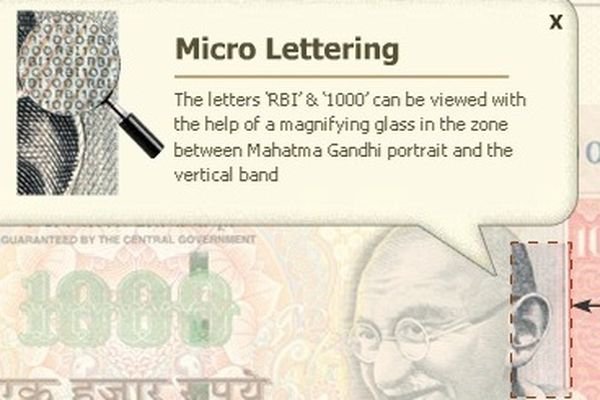
5. Intaglio Printing
In simple terms, Intaglio Printing is a technique in which the image is engraved into a surface, which raises the design, making it possible to feel it with touch. All the important features of the note, including the portrait of Mahatma Gandhi, the Reserve Bank seal, guarantee and promise clause, the Ashoka Pillar Emblem on the left, and the RBI Governor’s signature are printed in intaglio. This feature appears in the notes of ₹20 and above.
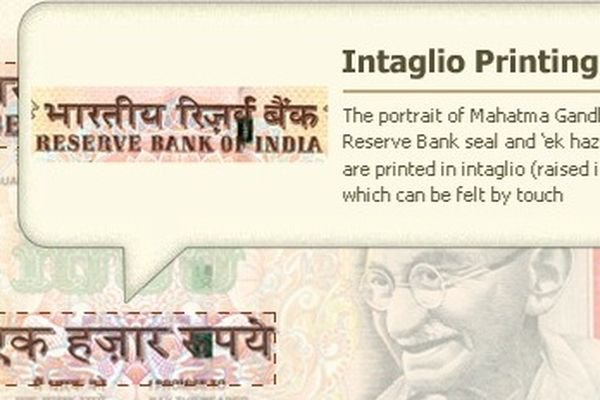
6. Identification mark
There’s an identification mark on every note, except for ₹10 notes, printed in intaglio. It lies on the left of the watermark. The mark differs in shape for the notes of different denominations. It’s a vertical rectangle for ₹20, a square for ₹50, a triangle on ₹100 notes, a circle on ₹500 notes and a diamond shape on ₹1000 notes. The intaglio print helps people with visual impairment to identify the denomination.

7. Fluorescence
While it’s not possible to see this feature in normal light, it actually is very important to ensure the genuineness of the currency notes. The number panels on the Indian currency notes are printed in fluorescent ink and the notes also have optical fibres, both of which are visible on exposing the note to an ultra-violet lamp.

8. Optically Variable Ink
This is a relatively new feature with a revised colour scheme, incorporated by the RBI in ₹500 and ₹1000 notes. The numbers 1000 and 500 of the respective notes are printed in optically variable ink on the obverse, using colour-shifting ink. The numbers 500/1000 change colour when held at at an angle, which otherwise appear green.

9. See through Register
Our notes are actually a classic piece of art if you look carefully. There’s an intricate floral design in the middle of the vertical band, on both sides of the note. It has an accurate back-to-back registration, which looks like one floral design when exposed to the light.
